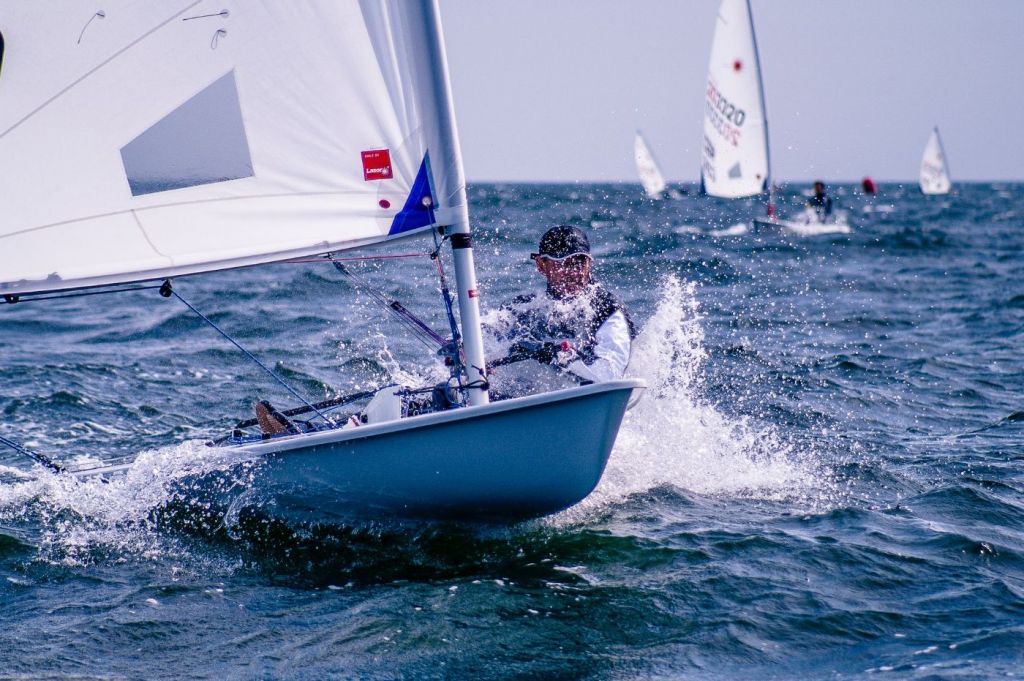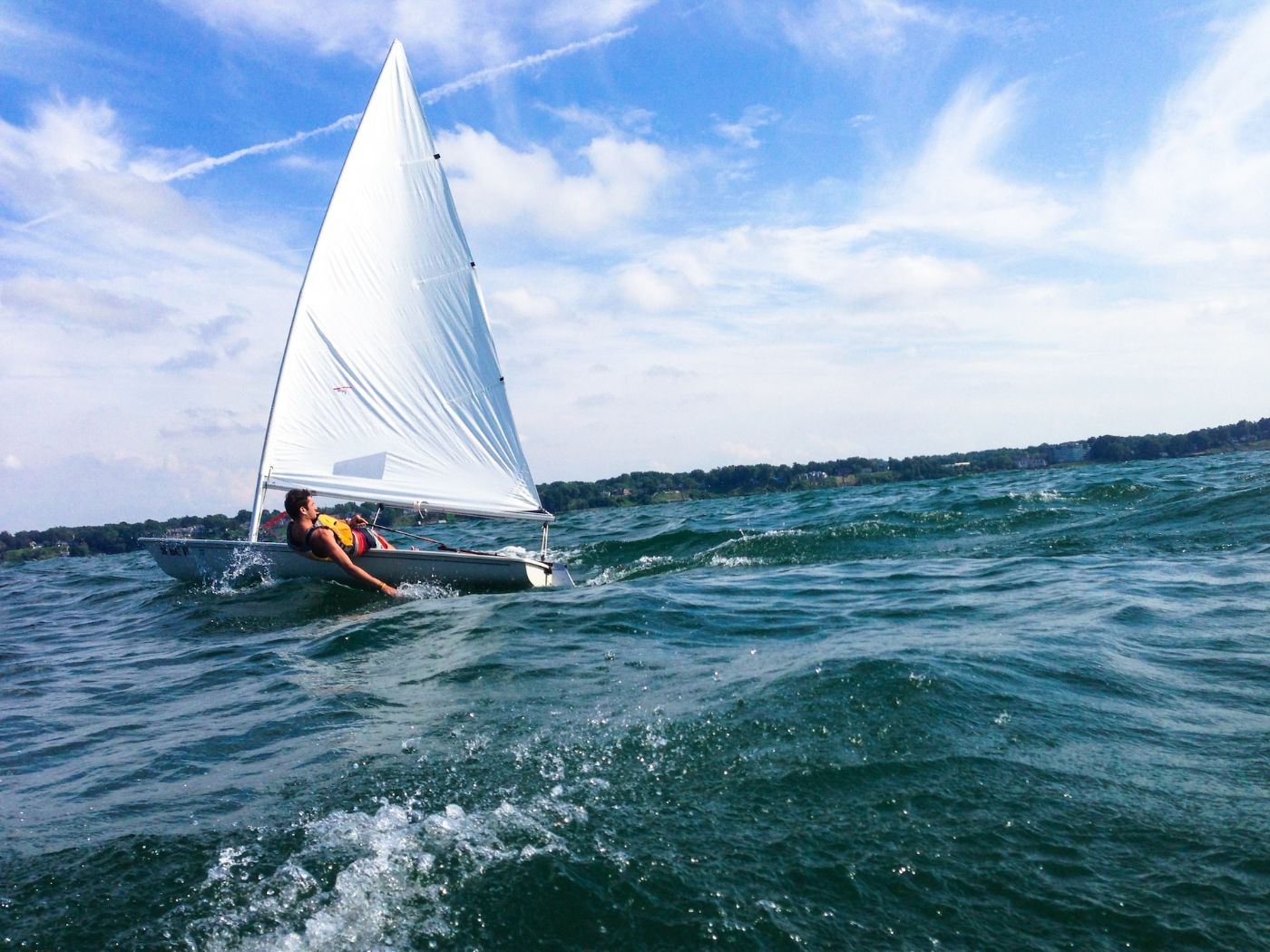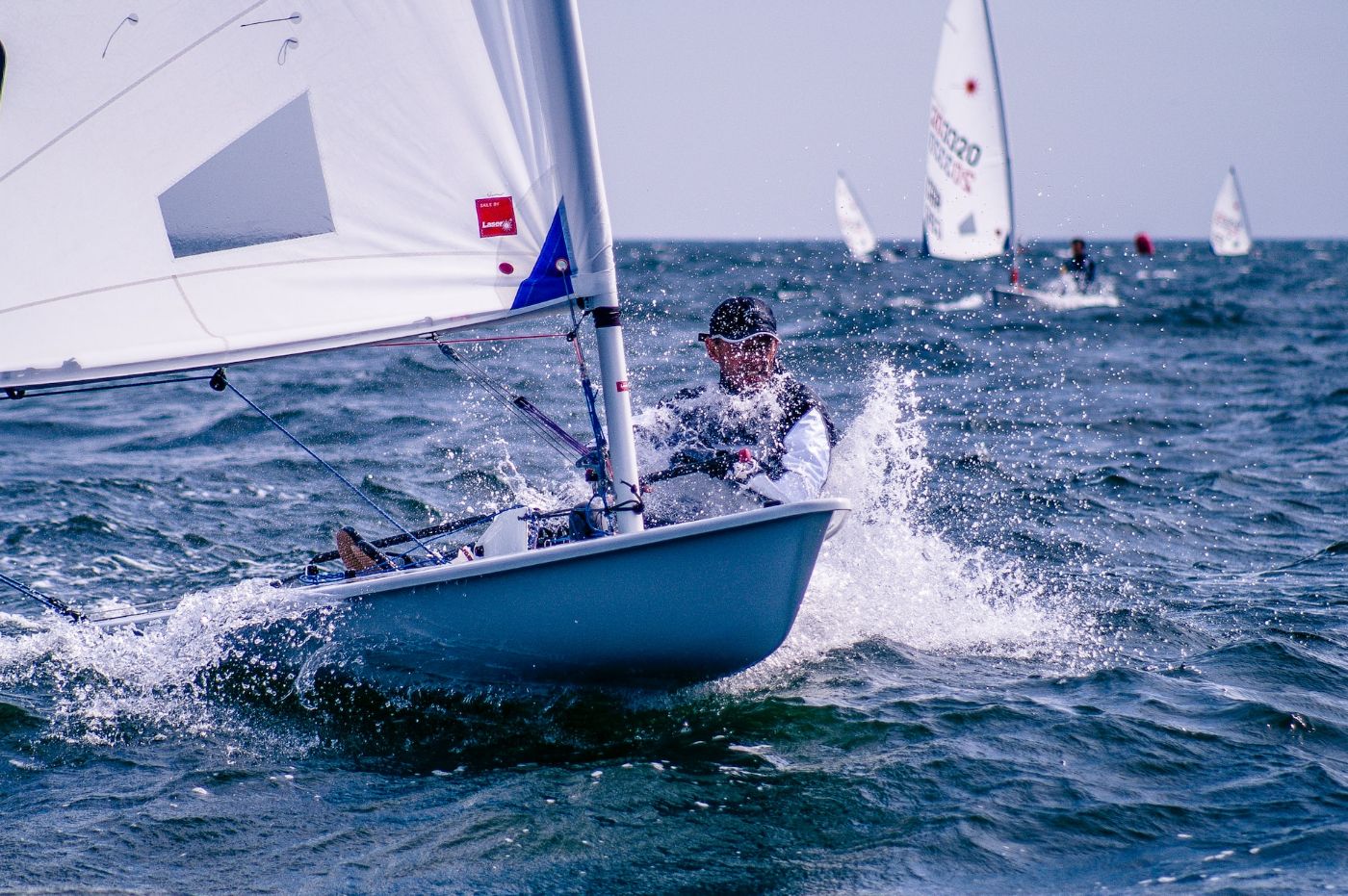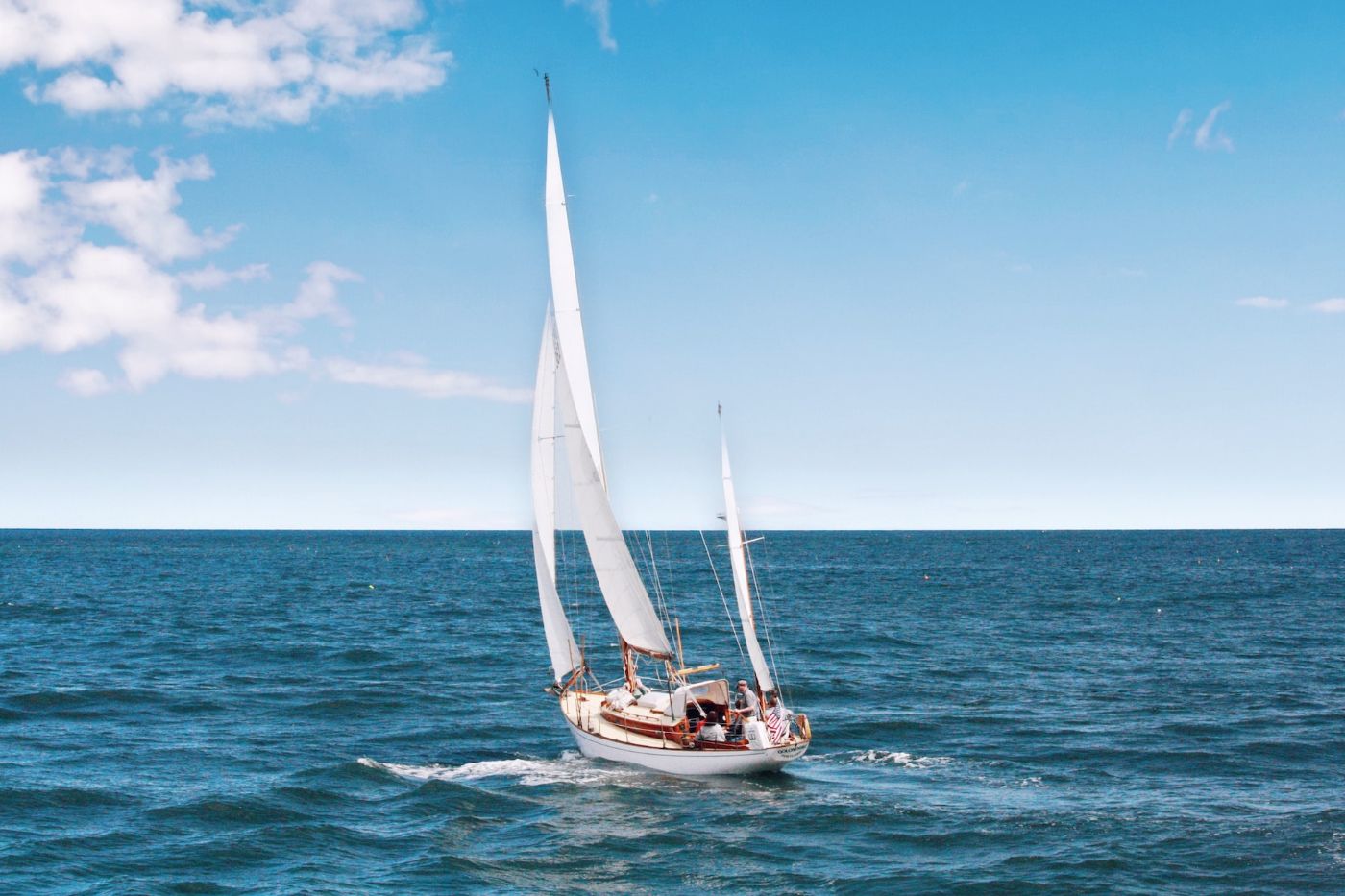You Can Learn to Sail Surprisingly Quickly (3 Levels)
With the right approach, anyone can learn to sail surprisingly quickly, even if they have no prior experience. Let's see how long it takes to learn three different levels of sailing proficiency, each with its own set of skills and techniques to master.
Learning to sail a Laser can take a few days to several weeks. As for learning how to sail a yacht, you can learn the basic skills in a few weeks to several months. If you plan to sail around the world, you'll need several months to a few years to gain the necessary skills, depending on your starting point.
One consideration when starting to learn sailing is to choose a certified school that will provide you with quality instruction and ensures that you're learning the latest techniques and safety procedures. Let's see what else you need to consider to be on the right track to learning to sail safely and confidently.
Summary
- Although you can learn how to sail a Laser in a few hours, being a pro takes a week of intense practice. It can be challenging also, especially in windy conditions, so you have to learn quickly how to properly trim sails to have proper control.
- Yachts are much bigger than Lasers so it will take some time to get used to the extra space. You'll need time to get familiar with its parts which is why it will take at least weeks or months to fully sail a yacht confidently.
- The best practice to quickly learn how to sail around the world is to join world championships or regattas to gain experience and build your confidence in long-distance sailing.

It Takes 1 - 2 Weeks to Learn The Essentials of Sailing
The amount of time it takes to learn how to sail can vary depending on a number of factors, including your natural ability, your previous experience with sailing, the quality of instruction you receive, and the amount of time you spend practicing.
You may be able to pick up the essentials of sailing in just 1–2 weeks of intense training. You can even get a sailing certification in just 10 days after your training.
Now when it comes to boat type, learning to sail a Laser, a popular one-design racing dinghy, can take anywhere from a few days to several weeks. Although a beginner can take a few hours to a few days to become comfortable sailing a laser, becoming proficient at it can take several weeks or even months of practice.

If you're interested in sailing a yacht, the learning curve may be a bit steeper. Because they are typically larger and more complex, it will need a longer time before you can confidently sail a yacht.
It can take a beginner several weeks or even months of instruction and practice to become comfortable sailing a yacht. Becoming proficient at sailing a yacht can take several months or even years of practice and experience.
Learning to sail around the world is a much more complex and involved process than simply learning to sail a laser or a yacht. It requires a high level of sailing skill, navigation knowledge, and experience.
It can take years of preparation and training to become proficient enough to sail around the world. Some sailors spend several years sailing smaller boats, building up their experience and skills, before attempting a circumnavigation.
In addition to sailing skills, circumnavigating requires knowledge of weather patterns, navigation techniques, and the ability to handle emergencies at sea. This knowledge can take years to acquire.
The actual time it takes to sail around the world can vary depending on the route taken, the weather conditions encountered, and the speed of the boat. A typical circumnavigation can take anywhere between 3 to 5 years to complete.
1. Mastering Laser sailing in just one week

The Laser is a single-handed boat, meaning that you sail it by yourself. It's a lightweight boat, weighing only 130 pounds, which makes it easy to maneuver. The Laser is also a high-performance boat, capable of reaching speeds of up to 15 knots in the right conditions.
To learn to sail a Laser, you'll need to take sailing lessons. Most people can pick up the basic skills needed to sail a Laser within a week of intensive sailing lessons. During these lessons, you'll learn how to rig the boat, how to tack and jibe, how to control the boat's speed, and how to use the daggerboard to steer the boat.
One of the key things to understand about Laser sailing is how to control the boat's speed. This is done by adjusting the sail's angle to the wind.
Sailing a Laser can be challenging, especially in windy conditions. If you're overpowered, you have to know how to depower the sail by easing the mainsheet. You'll also need to know how to tack and jibe quickly and efficiently to avoid capsizing.
When sailing upwind, you may want to trim the sail tight to catch as much wind as possible. When sailing downwind, you might want to ease the sail out to catch more wind and increase your speed.
Here are a few tips to help you master Laser sailing:
-
Start in light wind conditions: The Laser is a light wind boat, so it's best to start sailing in light wind conditions. This will give you a chance to get used to the boat's handling without being overwhelmed by strong winds.
-
Practice your tacks and gybes: Tacking and gybing are two of the most important maneuvers in Laser sailing. Practice these maneuvers until you can do them smoothly and quickly.
-
Keep your weight forward: Keeping your weight forward in the boat will help you maintain control and speed. When sailing upwind, sit forward in the boat with your feet against the hiking straps. When sailing downwind, move your weight aft to keep the boat balanced.
-
Use your body weight to control the boat: The Laser is a responsive boat that responds to your body weight. Use your body weight to control the boat's pitch and roll, especially in choppy conditions.
-
Keep your eyes on the telltales: The telltales on the sail are a great way to judge the sail's angle to the wind. Keep your eyes on the telltales to make sure you're sailing at the optimal angle.
2. Transitioning from lasers to yachts
Sailing a yacht can be an exciting and rewarding experience. However, it takes time and effort to learn how to sail a yacht safely and confidently.
The first thing you'll notice when transitioning to a yacht is the size. Yachts are much bigger than Lasers, and it can take some time to get used to the extra space.

You'll also notice that yachts have a mast, which is the tall vertical pole that holds up the sails. The mast on a yacht is much taller than on a Laser, so you'll need to be careful when raising and lowering the sails.
Another difference you'll notice is the steering. Instead of a tiller like on a Laser, yachts have a wheel that you use to steer the boat. You'll need to get used to the different feel of the wheel and how it affects the boat's direction.
(To get more familiar with other sailboat parts, read this article.)
Typical sailing certification courses can take around 10 days, including both practical and theoretical classes to help you develop a holistic understanding of the sailing process.
During the course, you will learn about yacht parts and terminology, navigation, safety procedures, and more. You will also get hands-on experience with larger boats, crew, and experienced sailors.
If you are planning a sailing holiday, you can rent a yacht from a marina or charter company. Most companies require that you have a skipper's license or sailing experience. However, some companies offer a skipper for an additional fee.
Before you set sail, here are a few tips to keep in mind:
- Make sure you are familiar with the safety procedures and have confidence in your sailing skills.
- Always wear a life jacket and know how to use the safety equipment on board.
- Make it a habit to check the weather forecast and plan your route accordingly.
3. Learning to sail around the world
Sailing around the world can be an incredible adventure and a life-changing experience. It allows you to explore different cultures, meet new people, and challenge yourself in ways that you never thought possible. However, it's not something that you can do on a whim. It requires careful planning, preparation, and a lot of hard work.

Circumnavigating the world takes between 3 to 5 years on average, depending on various factors such as the route, weather conditions, and the amount of time you want to spend sightseeing. It's not a quick trip, but it's a journey that requires patience, dedication, and a love for sailing.
To sail around the world, you need to do the following:
1. Have a well-prepared route
Before you set sail, you might need to take into account the various ports of call, weather patterns, and other factors that can affect your journey. The safest sailing route to circumnavigate the world is along the equator as it offers the most reliable sailing weather and calmest waters.
2. Choose the best type of boat for sailing around the world
Sailing around the world is not for the faint-hearted, so you need to have a seaworthy boat that can handle the challenges of long-distance sailing, as well as all the necessary safety equipment, provisions, and supplies.
If you're eyeing a catamaran, the perfect size of a catamaran fit for sailing around the world will be around 37 to 47 feet long. This is just the right size as it doesn't feel cramped and is also not too big to make it difficult to handle.
3. Take part in world championships to gain experience
Many sailors who have completed this journey recommend taking part in world championships or regattas to gain experience and build their confidence before embarking on a long-distance voyage. These events can also help you meet other sailors, learn from their experiences, and get tips on how to prepare for your journey.
Some of the youngest sailors who have sailed around the world alone can be found in this article.
Choose the Right Sailing Course To Quickly Learn Sailing
You can start your learning journey by choosing the right sailing course that matches your skill level and goals. Here are some things to keep in mind when selecting a sailing course:

Consider your skill level
If you're a beginner, you'll want to start with a basic sailing course that covers the fundamentals of sailing, such as sail trim, steering, and safety procedures. ASA 101 is a great place to start, and it will provide you with a solid foundation in sailing.
If you're already comfortable with the basics, you might want to consider taking an intermediate or advanced course to improve your skills.
Look for a certified school
When choosing a sailing school, look for one that is certified by a reputable organization like the American Sailing Association (ASA). A certified school will provide you with quality instruction and ensure that you're learning the latest techniques and safety procedures.
Choose the right type of course
There are many different types of sailing courses, from weekend courses to multi-week programs. Consider your schedule and how much time you can commit to learning.
If you're short on time, a weekend course might be the best option. If you have more time, a multi-week program will allow you to learn at a more relaxed pace.
Decide on your end goal
What are your sailing goals? Do you want to sail a Laser, a yacht, or even circumnavigate the world? Your end goal will help determine the type of course you should take.
If you want to sail a Laser, you'll want to take a course that focuses on small-boat sailing. If you want to sail a yacht, you'll need to take a course that covers larger boats and more advanced sailing techniques.
Consider private lessons
If you're not comfortable learning in a group setting, perhaps try taking private lessons. Private lessons can be tailored to your specific needs and skill level, and you'll have the undivided attention of your instructor.
Did you find the answer to your specific question?
👍 0 👎 0




Leave a comment